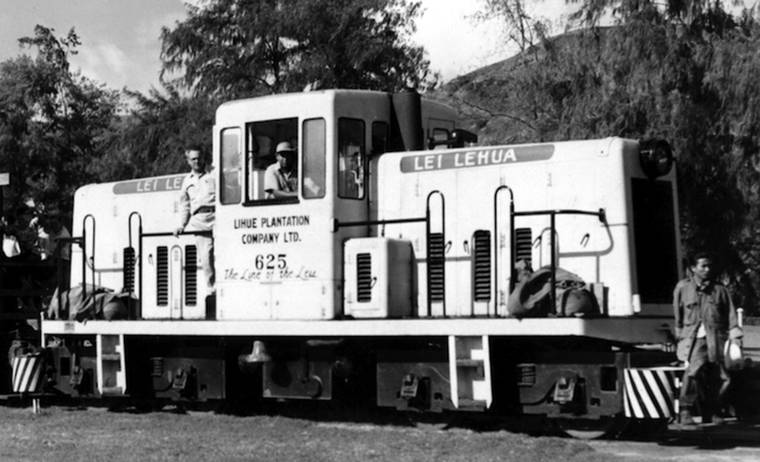Lihu‘e Plantation Company was founded in 1849 as Henry A. Pierce &Co. and was in continuous operation on Kaua‘i until it closed in 2000.
But it was not until 1892, when Baldwin Locomotive Works locomotive “W. C. Parke” pulled loaded cane cars from its harvesting fields to the Lihu‘e mill for processing that railroad transport replaced ox-carts at Lihu‘e Plantation.
By 1910, the plantation’s railroad and rolling stock, with its rail yard located at the mill, had grown to 31 miles of main track and five miles of portable track, six locomotives, 420 cane cars and 40 sugar cars.
Also, by that time, several railroad bridges and trestles had been constructed over Lihu‘e Plantation’s numerous gulches, one of which was a tall, central-steel-span trestle built over Hanama‘ulu Gulch, which was replaced in 1925 by a concrete trestle that still stands a short distance up from Hanama‘ulu Beach Park.
In 1931, the plantation’s railroad system had grown to six locomotives and 724 cane cars.
Besides hauling its own sugarcane by railroad, Lihu‘e Plantation also carried Kipu Plantation’s harvested sugar to the Lihu‘e mill, until Kipu Plantation closed in 1941, and it delivered Grove Farm’s sugarcane to the Lihu‘e mill in conjunction with Grove Farm’s railway until 1948, when Grove Farm acquired a mill of its own at Koloa.
Meanwhile, bagged raw sugar from the mill was transported by rail to Nawiliwili Landing and later to Ahukini Landing, where Lihu‘e Plantation maintained a warehouse and a wharf for transferring sugar onto steamers.
Beginning in 1930, Lihu‘e Plantation also shipped its sugar from Nawiliwili Harbor.
The plantation also utilized a number of tanker cars in which molasses was hauled by rail to Nawiliwili Harbor or Ahukini Landing.
Diesel-powered locomotives began to replace steam locomotives at Lihu‘e Plantation in 1938, the same year that trucks were first used for hauling sugarcane, along with rail.
Lihu‘e Plantation finally switched over completely from hauling sugar by railroad to conveying sugar with cane-haul trucks in 1960 — the last sugar plantation in Hawai‘i to do so.
•••
Hank Soboleski has been a resident of Kauai since the 1960s. Hank’s love of the island and its history has inspired him, in conjunction with The Garden Island Newspaper, to share the island’s history weekly. The collection of these articles can be found here: https://bit.ly/2IfbxL9 and here https://bit.ly/2STw9gi Hank can be reached at hssgms@gmail.com




